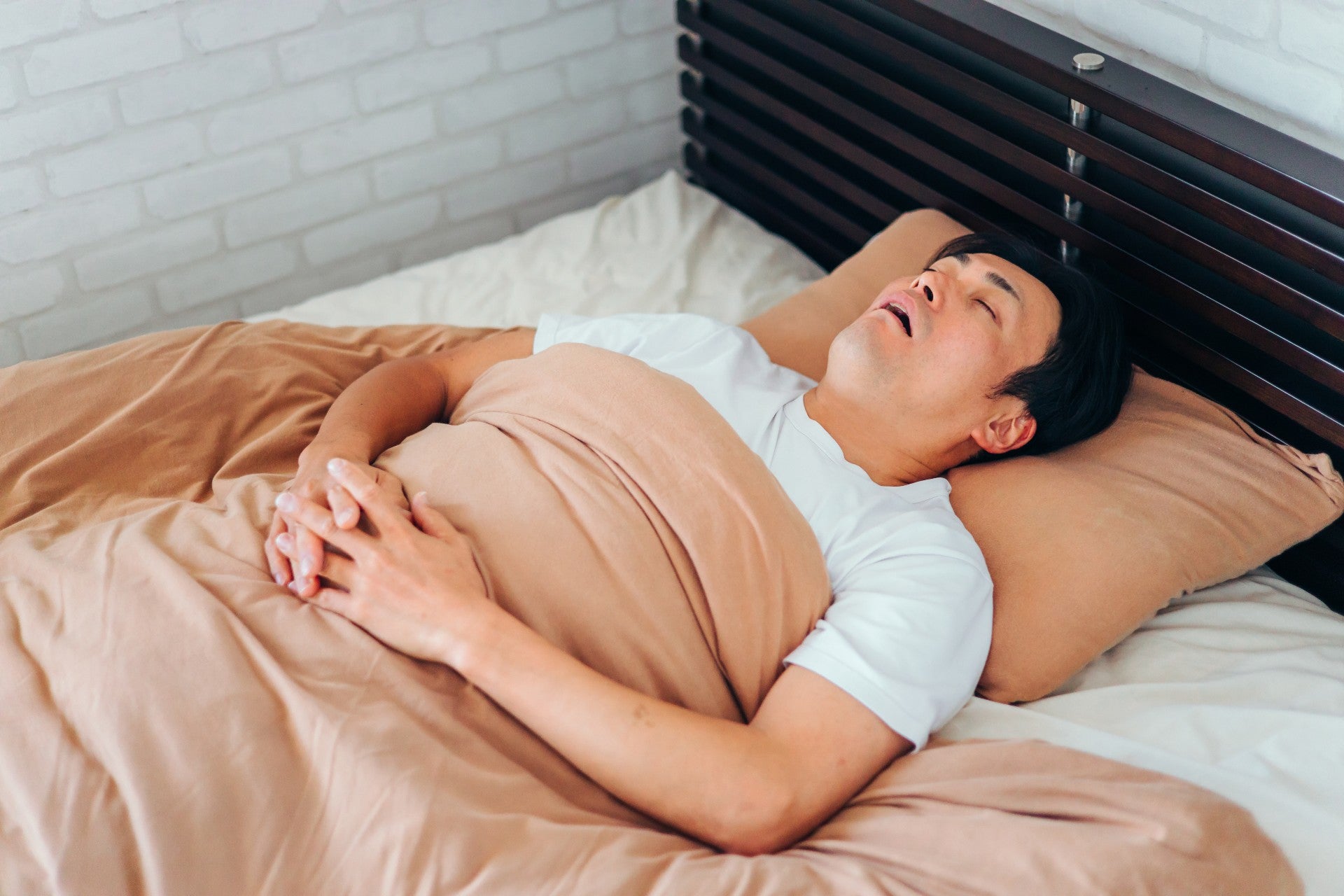The Ultimate Guide to Sleeping Positions 2023: Impact on Health and Comfort
Introduction
Sleep - it's something we all do, but how much thought do we give to the way we do it? Your sleeping position can have a profound impact on your health and overall comfort. In this guide, we delve into the various sleeping positions and explore how they affect our wellbeing. From spinal health to sleep quality and even specific health issues, understanding your sleeping posture can be the key to a better night's rest.
Table of Contents
- Overview of Different Sleeping Positions
- Sleeping Position and Spinal Health
- Impact on Sleep Quality and Breathing
- Best Positions for Common Health Issues
- How to Improve Your Sleeping Position
- Choosing the Right Mattress and Pillow for Your Sleeping Position
- FAQs About Sleeping Positions
- Conclusion
1. Overview of Different Sleeping Positions

Sleeping positions can significantly impact your overall health, comfort, and sleep quality. Let's explore the most common sleeping positions, each with its own set of benefits and potential drawbacks:
Back Sleeping
- Benefits:
- Often recommended for spinal health as it allows the spine, neck, and head to rest in a neutral position.
- Helps in reducing acid reflux when the head is elevated.
- Minimizes wrinkles and skin breakouts since the face is not pressing against a pillow.
- Drawbacks:
- Can exacerbate snoring and may contribute to sleep apnoea as gravity can cause the tongue to fall back, blocking the airway.
- Not recommended for pregnant women due to potential pressure on the back and abdomen.
Side Sleeping
- Benefits:
- Popular for comfort and health benefits.
- Good for digestion and may help reduce acid reflux.
- Ideal for pregnant women as it improves circulation to the heart, beneficial for both mother and baby
- Drawbacks:
- Can lead to shoulder and hip pain due to pressure points, especially if the mattress does not provide adequate support.
- May cause facial wrinkles and sagging breasts over time due to gravity.
Stomach Sleeping
- Benefits:
- May alleviate snoring by keeping the upper airways more open.
- Some people find this position comfortable for their neck and spine.
- Drawbacks:
- Often leads to neck and back strain as it's difficult to keep the spine in a neutral position.
- Puts pressure on muscles and joints, potentially leading to numbness, tingling, and pain.
Foetal Position
-
Benefits:
- One of the most comforting and natural sleeping positions.
- Ideal for pregnant women as it improves circulation and prevents the uterus from pressing against the liver.
- Drawbacks:
- Can restrict deep breathing due to the curled position.
- May lead to joint pain and stiffness, particularly in the knees and hips
Combination Sleeping
-
Benefits:
- Involves changing positions throughout the night, potentially offering various benefits while mitigating the negatives of each position.
- Can reduce the risk of pain and discomfort as no single pressure point is overburdened.
-
Drawbacks:
- Frequent movement can lead to disruptions in sleep, particularly for light sleepers.
- May not provide consistent support for the spine if the mattress is not designed for versatility.
Understanding the characteristics of each sleeping position can help you make informed choices about your sleep posture, mattress, and pillow selection to enhance comfort and health.
2. Sleeping Position and Spinal Health

The Crucial Link Between Sleep and Spine Health
The way you sleep can have a significant impact on your spinal health. A good sleeping position should support the natural curve of your spine, helping to prevent pain and discomfort. Let's explore how different sleeping positions affect your spine and posture, and provide some tips for maintaining spinal alignment.
Back Sleeping: A Spine-Friendly Choice
Sleeping on your back is often considered one of the best positions for spinal health. It allows your head, neck, and spine to rest in a neutral position, reducing the chances of experiencing pain. However, the right pillow is crucial; it should be neither too high nor too low but just right to support the natural curve of your neck. Adding a small pillow under your knees can also help maintain the natural curve of your lower back.
Side Sleeping: Popular but with a Caution
While side sleeping is a common position, it can sometimes lead to spinal misalignment, especially if your mattress doesn't provide adequate support. To maintain spinal health while sleeping on your side, use a thicker pillow to keep your head aligned with your spine. Placing a pillow between your knees can prevent your upper leg from pulling your spine out of alignment and reduce stress on your hips and lower back.
Stomach Sleeping: Proceed with Care
Stomach sleeping can be problematic for spinal health. It tends to flatten the natural curve of the spine and can strain your neck if you're turning your head to one side. If you prefer this position, try using a very thin pillow or no pillow at all to keep your neck as neutral as possible. Placing a pillow under your pelvis can also help reduce the strain on your back.
Foetal Position: Comfort with a Twist
The foetal position, while comfortable for many, can also lead to spinal issues if not practiced carefully. Curling up too tightly can restrict deep breathing and cause discomfort in your back and joints. Try to relax your posture slightly and use a supportive pillow to maintain neck alignment.
Combination Sleeping: Balancing Act
For combination sleepers who shift positions throughout the night, ensuring a good mattress that accommodates various positions is key. Look for a medium-firm mattress that provides enough support while adapting to different postures.
Tips for Maintaining Spinal Alignment
- Choose the Right Mattress: Your mattress should support the natural curve of your spine. It should be firm enough to support your body but soft enough to contour to your shape.
- Use Proper Pillows: Pillows play a critical role in maintaining spinal alignment. Choose a pillow that supports the natural curve of your neck.
- Be Mindful of Posture: Even small adjustments to your sleeping position can improve spinal alignment. Be conscious of your posture as you fall asleep.
By being mindful of how your sleeping position affects your spine and taking steps to maintain proper alignment, you can enhance your spinal health and overall sleep quality.
3. Impact on Sleep Quality and Breathing

Understanding the Relationship Between Sleeping Position and Sleep Quality
The position in which you sleep can greatly influence the quality of your rest. Each sleeping posture has its own impact on how well you breathe at night and, consequently, how well you sleep.
Back Sleeping and Sleep Quality
Sleeping on your back can be a double-edged sword when it comes to sleep quality. On one hand, it allows for optimal spinal alignment and can reduce chronic pain, potentially leading to better sleep. On the other hand, back sleeping can exacerbate snoring and symptoms of sleep apnoea. When lying on your back, gravity can cause the tongue to fall back, narrowing the airway and leading to breathing difficulties.
Side Sleeping: A Boon for Breathers
Side sleeping is often touted as the best position for breathing. It keeps the airways open and is particularly beneficial for those with obstructive sleep apnoea. The elongated position of the neck and head can reduce snoring and facilitate easier breathing, leading to a more restful night's sleep.
Stomach Sleeping: Mixed Effects
While stomach sleeping can reduce snoring and some aspects of sleep apnoea, it is generally not recommended due to the strain it puts on the neck and spine. The twisted position can lead to discomfort and restless sleep, negating the potential benefits for breathing.
The Foetal Position and Breathing
The foetal position, while comfortable for many, can restrict deep breathing due to the curled posture. This can lead to less efficient breathing and potentially disrupt sleep, especially if the position becomes too tight.
Enhancing Sleep Quality
- Adjusting Your Position: If you have breathing difficulties or snore heavily, experimenting with different sleeping positions can be beneficial. For instance, transitioning from back to side sleeping may help.
- Using Pillows Strategically: Proper pillow placement can aid in maintaining open airways. Side sleepers can benefit from a supportive pillow to keep the neck aligned, while back sleepers might need a pillow that prevents the head from tilting too far back.
- Consider a Humidifier: If dry air is exacerbating breathing issues during sleep, a humidifier can add moisture to the air and facilitate easier breathing.
By understanding how your sleeping position affects your breathing and overall sleep quality, you can make adjustments to improve your rest. Sometimes, small changes can lead to significant improvements in the quality of your sleep.
4. Best Positions for Common Health Issues

Tailoring Sleep Posture to Health Needs
Different sleeping positions can have varying impacts on common health issues. Understanding which position best suits your specific health needs can significantly improve your sleep quality and overall well-being.
Sleep Positions for Acid Reflux and Heartburn
- Elevated Back Sleeping: Sleeping on your back with your head elevated can help prevent acid from traveling up the oesophagus. An adjustable bed or a wedge pillow can be particularly helpful.
- Left Side Sleeping: Lying on your left side is recommended for reducing acid reflux symptoms, as it keeps the stomach below the oesophagus and reduces the likelihood of acid flow.
Managing Back Pain
- Back Sleeping with Knee Support: Lying on your back with a pillow under your knees can help maintain the natural curve of your spine and alleviate back pain.
- Side Sleeping with a Pillow Between Knees: This position can help keep your hips, pelvis, and spine in better alignment.
Reducing Snoring and Sleep Apnoea
- Side Sleeping: This position can help keep the airways open and reduce snoring and the effects of sleep apnoea.
- Back Sleeping with Head Elevation: Elevating the head can also help open up airways; however, back sleeping may not be suitable for everyone, especially if it worsens snoring.
Pregnancy Sleep Comfort
- Side Sleeping, Especially Left Side: Sleeping on the side, particularly the left side, is often advised during pregnancy for better blood flow to the foetus, uterus, and kidneys.
- Using Pregnancy Pillows: These specially designed pillows can provide extra support and comfort, particularly when placed between the knees.
Joint Pain and Arthritis
- Side or Back Sleeping with Proper Cushioning: Using supportive pillows and mattresses can help alleviate pressure on the joints and provide relief from arthritis pain.
Customizing Your Sleep Environment
- Choosing the Right Mattress: Your mattress should support your body's needs, whether it's firmness for back support or softness for pressure relief.
- Pillows and Accessories: Consider ergonomic pillows, mattress toppers, and other accessories that can help optimize your sleeping position for specific health conditions.
By adjusting your sleeping position and customizing your sleep environment, you can address various health concerns and enhance your sleep quality, leading to better health and comfort.
5. How to Improve Your Sleeping Position

Enhancing Sleep Posture for Better Health
The way you sleep can have a profound impact on your overall health and well-being. Making small adjustments to your sleeping position can lead to significant improvements in sleep quality and physical comfort. Here’s how you can optimize your sleeping posture:
Transitioning to Healthier Sleep Positions
- Gradual Changes: If you’re trying to shift to a healthier sleeping position, such as moving from stomach to side sleeping, do it gradually. Start by positioning yourself in the new posture each night until it becomes more natural.
- Use of Pillows: Pillows can be strategically used to encourage certain positions. For example, a body pillow can help side sleepers maintain alignment and prevent rolling onto the stomach.
Aligning Your Spine
- Back Sleepers: Ensure your pillow isn’t too high. It should support the natural curve of your neck without tilting your head excessively.
- Side Sleepers: Align your ears with your shoulders. A supportive mattress that contours to your body can help maintain spinal alignment.
- Stomach Sleepers: If you can’t avoid this position, use a thin pillow or no pillow under your head. Placing a pillow under your pelvis can help keep your back in a more neutral position.
Strengthening Exercises and Stretches
- Core Strengthening: Strong core muscles can help maintain good sleeping posture. Consider exercises like planks or Pilates.
- Stretching: Regular stretching, especially before bed, can help alleviate muscle tension and promote better sleep posture.
Mindful Sleep Habits
- Body Awareness: Pay attention to your body's signals. If you wake up sore or tense, consider what changes might help.
- Consistency: Try to maintain a consistent sleep schedule and routine to promote healthier sleep habits.
When to Seek Professional Advice
If you’re experiencing persistent pain or discomfort despite changing your sleep position, it may be worthwhile to consult with a healthcare professional. They can provide tailored advice and help identify any underlying issues that might be affecting your sleep posture.
By consciously working on improving your sleeping position and being mindful of your body's needs, you can enhance both your sleep quality and overall health.
6. Choosing the Right Mattress and Pillow for Your Sleeping Position

The Foundation of Good Sleep: Mattress and Pillow Selection
Your choice of mattress and pillow plays a pivotal role in supporting your preferred sleeping position. The right combination can enhance spinal alignment, alleviate pressure points, and contribute to a restful night's sleep.
Mattress Selection Based on Sleeping Position
- Back Sleepers: A medium-firm mattress is often ideal. It supports the lower back and keeps the spine neutral. Memory foam or hybrid mattresses can provide the right balance of support and comfort.
- Side Sleepers: Look for a mattress that contours to your body, like memory foam or a softer hybrid. These materials can relieve pressure on the shoulders and hips.
- Stomach Sleepers: A firmer mattress can prevent the pelvis from sinking too deeply, which helps maintain spinal alignment.
- Combination Sleepers: A responsive mattress that adapts to various positions, such as a medium-firm hybrid, is typically a good choice.
Pillow Selection for Optimal Neck Support
- Back Sleepers: A pillow that supports the natural curve of the neck without elevating the head too much is ideal. Consider a memory foam pillow or one with adjustable fill.
- Side Sleepers: A thicker, firmer pillow can keep your head aligned with your spine. Look for one that fills the space between your neck and the mattress.
- Stomach Sleepers: A thin, soft pillow, or even no pillow, is best to keep your neck as neutral as possible.
Additional Considerations
- Material Preferences: If you have allergies or sensitivities, consider hypoallergenic materials like latex or specific types of foam. Explore our hypoallergenic options.
- Temperature Regulation: For those who sleep hot, mattresses and pillows with advanced cooling technologies are ideal. Our CoolSense mattresses, featuring 30x more airflow than traditional memory foam, ensure a cooler sleep experience.
- Trial Periods and Warranties: Utilize trial periods offered by many mattress and pillow companies to find a product that suits your needs perfectly. Check out our CoolSense Hybrid Mattress for optimal temperature regulation.
Investing time in choosing the right mattress and pillow can significantly improve your sleep experience. It's about finding the perfect combination that complements your sleeping position and meets your body's specific needs.
7. FAQs About Sleeping Positions

In this section, we address some of the most frequently asked questions about sleeping positions, offering insights to help you optimize your sleep posture for better health and comfort.
Q1: Can Changing My Sleeping Position Help Reduce Snoring?
A: Yes, changing your sleeping position can affect snoring. Side sleeping is often recommended to reduce snoring, as it helps keep airways open. Back sleeping can exacerbate snoring due to the tongue falling back and blocking the airway.
Q2: What is the Best Sleeping Position for Lower Back Pain?
A: Sleeping on your back with a pillow under your knees can help maintain the natural curve of your spine and alleviate lower back pain. Side sleepers should consider a pillow between their knees to keep the spine aligned.
Q3: Is It Harmful to Sleep on Your Stomach?
A: Stomach sleeping can strain your neck and back since it's difficult to maintain a neutral spine position. If you prefer this position, try using a thin pillow or no pillow for your head and a pillow under your pelvis.
Q4: How Do I Transition to a New Sleeping Position?
A: Transitioning to a new sleeping position takes time and patience. Start by positioning yourself in the new posture each night and using pillows to support and maintain the position. It may feel uncomfortable at first, but with consistency, your body will adapt.
Q5: Can My Sleeping Position Affect My Pregnancy?
A: Yes, sleeping position during pregnancy is important. Side sleeping, especially on the left side, is generally advised for better blood flow to the foetus. Using pregnancy pillows can provide extra support and comfort.
Q6: Are Special Pillows Effective for Certain Sleeping Positions?
A: Special pillows, like ergonomic or contoured pillows, can be very effective for supporting certain sleeping positions. They are designed to maintain proper alignment of your neck and spine.
Q7: How Often Should I Replace My Mattress and Pillow for Optimal Sleep?
A: Mattresses typically should be replaced every 7-10 years, while pillows may need replacing every 1-2 years. However, this can vary based on the quality and type of the mattress and pillow, as well as individual wear and tear.
By addressing these common queries, we hope to help you understand how sleeping positions affect various aspects of health and well-being, and how you can make adjustments for better sleep.
8. Conclusion

As we come to the end of our comprehensive guide on sleeping positions, it’s clear that the way we sleep has profound implications for our health, comfort, and overall quality of life. Understanding and being mindful of your sleeping posture can make a significant difference in addressing various health concerns, from spinal alignment and chronic pain to snoring and sleep quality.
Embracing Individual Needs
Remember, there is no one-size-fits-all solution when it comes to sleeping positions. Each person’s body is unique, and what works for one may not work for another. It’s essential to listen to your body and adjust your sleeping habits accordingly. Whether it means changing your sleeping position, modifying your sleep environment, or investing in the right mattress and pillow, small changes can lead to significant improvements in sleep quality and overall health.
The Journey to Better Sleep
Improving your sleep posture is a journey, not a destination. It may require experimentation and adjustments, but the benefits are well worth the effort. Good sleep posture can enhance the restorative power of sleep, leaving you feeling refreshed and energized upon waking.
Continuous Learning and Adaptation
As we continue to learn more about the science of sleep, it’s important to stay informed and be willing to adapt your habits for the sake of your health. Keep in mind that your needs may change over time, and so might your ideal sleeping position.
We hope this guide has provided valuable insights and practical tips to help you optimize your sleeping position for a healthier, more comfortable night's rest. Sweet dreams and happy sleeping!

